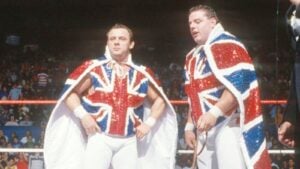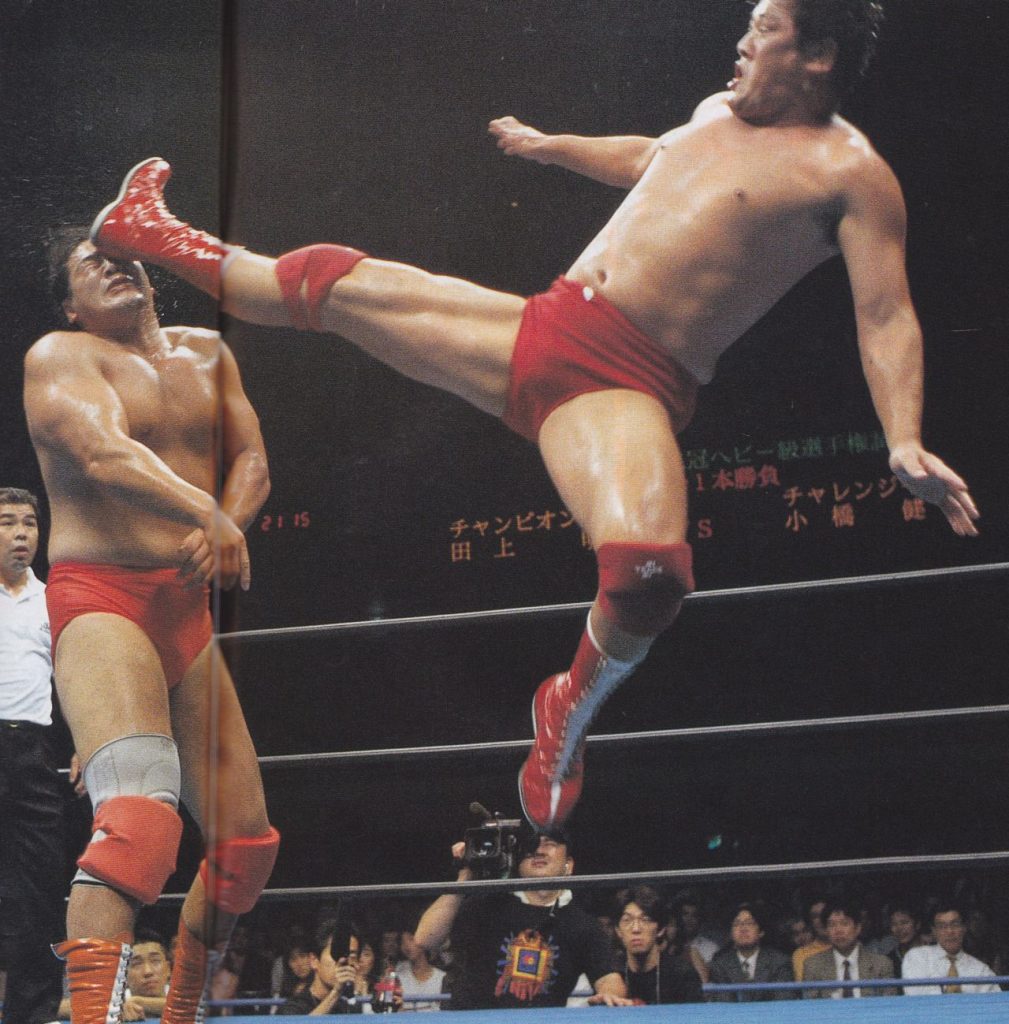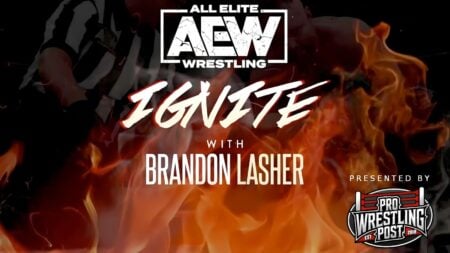Every famous group of wrestlers has that one person that ranks below the rest. For the SmackDown Six, it was Chavo Guerrero. The Four Horsewomen of WWE had Becky Lynch up until her meteoric rise to the top. And for All Japan Pro-Wrestling’s famed Four Pillars of Heaven, that person was Akira Taue.
Taue was considered the weakest, of these famed four wrestlers. The least skilled, the least exciting, the least memorable, the least innovative. And while that’s true to an extent, it doesn’t convey the entire picture. Taue was and still is, criminally underrated for his ability to tell a story. He was able to make more out of less. He wasn’t as dynamic or capable of standing on his own as the other Pillars and he knew it.
But instead of trying to get to their level and likely failing to do so, Taue played to his strengths. He then made the most of them. And the results of those efforts were some of the best pro wrestling matches of all time.
Akira Taue –
The first steps
Despite being the oldest and tallest of the Four Pillars, Taue debuted in AJPW in 1988, only a month before fellow Pillar Kenta Kobashi. Taue had done sumo wrestling prior to that. This had allowed him to gain some bulk and strength once he entered the world of Puroresu.
During the late eighties and early 1990s, Taue became involved in AJPW’s central feud: Tsuruta vs. Misawa. Then-ace Jumbso Tsuruta and his group challenging Mitsuharu Misawa and his fellow rising stars. Ironically, Taue sided with Tsuruta instead of Misawa and became a regular in those multi-man matches during those early years.
But it wasn’t until 1993 that things really took off for Taue.
Akira Taue and The Holy Demon Army
In early 1993, once the Tsuruta/Misawa rivalry had run its course and Misawa became the new ace and champion. Then something shocking happened: His right-hand man Toshiaki Kawada turned on him and joined forces with Taue.
The two of them became The Holy Demon Army, the greatest tag team in AJPW history. Over the course of the next seven years, the HDA would go to war with other top teams in AJPW, most notably against Misawa and either Kobashi or his later partner Jun Akiyama.
The collection of matches these men would have with each other would lead to them being dubbed, ‘The Four Pillars of Heaven’ or ‘Four Heavenly Kings’. Whenever Akiyama was involved in these discussions, they’d simply be known as ‘The Famous Five’.
The matches between Kawada & Taue and other tag teams in Japan are legendary. These are contests that still hold up well to this day. Between 1993 and 1997, Kawada & Taue wrestled in eight matches rated 5-stars by the Wrestling Observer.
Some of these matches remain among the greatest tag team matches of all time. In particular, the tag match between Kawada & Taue and Misawa & Kobashi from June 9th, 1995 is widely regarded as the greatest tag team match of all time.

In Comparison to The Fellow Pillars
And yet despite all this praise, Taue was still considered the lowest-ranked of these now-legendary wrestlers. Why? Because he didn’t really stand out that much on his own. Each one of them had their own identity as an individual. Misawa was the stoic ace that always maintained his composure, no matter what challenge lay before him.
Kawada was the brutal archrival that would do whatever it takes to win, even if that meant brutalizing his opponent with the most vicious moves imaginable. Kobashi was the gutsy underdog that fought from beneath and refused to stay down, even against the wisdom and advice of his more experienced allies.
As for Taue, well, compared to these other three, he was…bland. He didn’t have Kobashi’s physique, Kawada’s brutality and penchant for ‘delayed selling’ or Misawa’s perfect execution and unmatched sense of timing. Taue was tall and lanky, moved relatively slowly in the ring, and had a very limited offense. To many fans, there was a massive gap between Taue and the other Pillars.
What’s often overlooked about Taue was that he brought aspects of American wrestling to Japan. While the other three Pillars (and Akiyama) got crowd reactions due to their wrestling skill, Taue mostly got reactions due to his character work. Unlike almost any other native Japanese wrestler in AJPW, Taue wrestled like a classic, NWA-style villain.
He relied on underhanded tactics more than anyone else in that company. Eye pokes, cheap pins, and attacking his opponents’ weakened body parts without mercy were Taue’s trademarks. Even his erstwhile partner Kawada who would often kick his opponents when they were down and stomp on them like a jerk, would get cheers from the fans. This was because many people were invested in his aggressive persona and long-term goal of beating Misawa.
The Reaction by AJPW Fans
But Taue was one of the few wrestlers to get booed by AJPW’s fans. Bear in mind that AJPW’s wrestling product was focused on pure athleticism rather than gimmicks, angles, and outlandish storylines. They only used a handful of non-wrestling storytelling elements, such as the classic trope of ‘evil foreigner/gaijin’ teams and angles centered on real or real-looking injuries. Yet Taue managed to get booed very loudly and often by the AJPW crowd. At times more than the token evil foreigners that wrestled as overtly villainously as possible.
This became Taue’s calling card. Whenever he wrestled, he would be the villain and would get the crowd to cheer his opponents. He was fantastic in this role, even if his offensive skills weren’t on the same levels as his peers. That is, except the one move he did exceptionally well: the Chokeslam.
The Chokeslam
Taue’s Chokeslam wasn’t like those seen in North America. It wasn’t about getting as much height as possible and planting one’s opponent with incredible force. For Taue, it was about grabbing his opponent by the throat and slamming their head against the canvas as fast as possible. That made his version of the Chokeslam – and all his later variations – so much more dangerous.
As a tag team wrestler, Taue achieved considerable success alongside partner Kawada. The two of them won the AJPW World Tag Team Championships six times, a record that stands to this day. They also won AJPW’s premier tag team tournament, the World Strongest Tag Determination League, twice in a row, which was rare for a team of ‘villains’.
Akira Taue:
Singles Success
Yet despite all of that tag team success, Taue’s accomplishments as a singles wrestler are few and far between. He was rarely in contention for the top singles title in AJPW. Even foreigners like Stan Hansen and ‘Dr. Death’ Steve Williams were higher on the singles totem pole than Taue. And yet, there were a handful of occasions on which Taue did shine as a singles competitor.
Taue’s first and only 5-star singles match took place on April 15th, 1995. It was a non-title match during AJPW’s annual singles tournament, the Champion Carnival. Taue faced Mitsuharu Misawa, who was unquestionably the company’s ace. Misawa had already proven against many other challengers that he was nearly indestructible, and he rarely lost, especially in singles matches. Taue knew he couldn’t go blow-for-blow against Misawa, so he had to do what he did best: wrestle like a chickens**t.
Taue came into the match with a strategy: attack Misawa’s eye. And it started to work; the normally-stoic Misawa began struggling to maintain control and he found it hard to concentrate on Taue’s offense. Misawa elbowed Taue so hard, he looked like he got knocked out legitimately.
For one brief moment, Taue managed to get the AJPW fans – those same fans that usually booed the hell out of him – to cheer for him. Although he failed to beat Misawa in this case, he did prove that he could, at the very least, hang with the company’s best in singles contests.
Immortality
Eventually, Taue’s luck and unpredictability would lead him to immortality. On May 24th, 1996, Taue did the seemingly impossible: he beat Misawa to win the Triple Crown Heavyweight Championship. In doing so, he ended Misawa’s third-longest reign almost one full year after it had begun. Unfortunately, Taue’s first and only Triple Crown run lasted only 61 days and one defense, as he lost it to Kenta Kobashi during the company’s big summer tour.

Pro Wrestling NOAH
In 2000, Taue followed Misawa and 95% of the AJPW roster to form Pro Wrestling NOAH. By that point in his career, Taue was very much considered a veteran and rarely wrestled beyond the big tag match alongside other veterans like Naoki “Takuma” Sano.
However, Taue did at one point challenge Kenta Kobashi for the GHC Heavyweight Championship during Kobashi’s historic run, only to come up short after falling to Kobashi’s Wrist-Clutch Burning Hammer.
He also played an integral part in the termination of arguably the worst experiment in NOAH’s history: Takeshi Rikio.
Takeshi Rikio was one of four rising stars pegged as potential future aces of Pro Wrestling NOAH during the company’s infancy. The other three were Takeshi Morishima, Naomichi Marufuji, and KENTA. NOAH’s decision-makers wanted one of these four men to be the ones to end Kobashi’s two-year heavyweight title reign.
Ultimately, they decided on Rikio.
The Rikio Experiment
Yet this was despite the fact that Rikio was easily the least exciting, dynamic, and had the least fan support. When Rikio pinned Kobashi, the audience was shocked, but not in a good way. Rikio’s time as GHC Heavyweight Champion was an utter disaster, as he failed to really deliver any stellar performances. Not even Misawa could make a credible champion and ace out of Rikio.
As further proof of Rikio’s status as a failure, his heavyweight title defense at Destiny 2005, NOAH’s biggest show ever, was fourth from the top. This was despite the fact that he was defending against fellow rising star Hiroshi Tanahashi, and that the year prior, the GHC Heavyweight title was the main event.
Shortly after that event, Rikio lost the title to, of all people, Akira Taue. But just like in AJPW, Taue was a transitional champion and lost the title 78 days later to Jun Akiyama.
After that, Taue would focus almost all of his time on non-wrestling responsibilities. In June 2009, shortly after Mitsuharu Misawa passed away, Taue was named president of NOAH. He carried it for as long as he could. He remained with NOAH in an executive, and later advisory capacity, until February 2017.
Akira Taue:
Legacy
Akira Taue is a perfect example of how looks can be deceiving. He wasn’t the scariest, strongest, or most stoic wrestler. But Taue still demonstrated great ring psychology. He used his craftiness when it mattered most. He could get the most out of so little. Taue knew exactly how to play his part in AJPW’s grand story narrative.
Although he never achieved the same level of singles success as Misawa, Kawada, or Kobashi, he didn’t need it. His role was to act as the clever foil that used underhanded tactics to win. But that underhandedness made him dangerous in his own right. He was one of the few wrestlers to defeat the legendary Mitsuharu Misawa decisively.
If there was ever someone that exemplified the idiom ‘never judge a book by its cover’, it’s Akira Taue.







